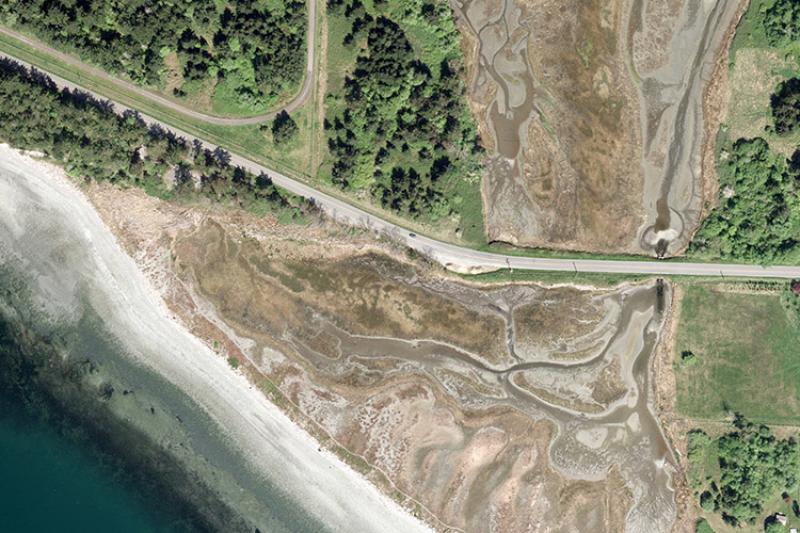Across Washington State, restoration projects are underway to aid in the recovery of declining salmon populations. In the northwestern region of Puget Sound, one such project is predicted to significantly increase juvenile salmon numbers. It will also providing the local community with infrastructure that is resilient to changing climate conditions.
Several years ago, residents of Marrowstone and Indian Islands in Jefferson County, Washington, contacted the State Department of Ecology. They had complaints about poor water quality and fish deaths around Kilisut Harbor, the body of water that lies between the islands.
The underlying cause? A roadway—and its too-small culverts—blocking the flow of water between Oak Bay, which lies on one side, and Kilisut Harbor beyond. The road serves as a lifeline for island residents, providing the only entry and exit point by car and their only connection to utilities on the mainland. But the old causeway also degraded habitat quality in the area and interrupted the migration routes of endangered salmon.
To restore this crucial salmon habitat and improve water quality in the area, the NOAA Restoration Center supported restoration work at Kilisut Harbor through our Community-based Restoration Program and the NOAA Coastal Resilience Grants.
In August 2019, NOAA and partners on the Kilisut Harbor Restoration Project team attended a groundbreaking ceremony to mark the beginning of construction. Through the project, partners removed the earthen embankment and two culverts on which the road previously sat. They replaced them with a four-span bridge.

When completed in August 2020, the project had restored 27 acres of historic tidal channel. It reconnected the large numbers of migrating juvenile salmon that converge at Oak Bay with the 2,285-acre Kilisut Harbor—and its plentiful foraging opportunities. With Oak Bay reconnected to Kilisut Harbor, fish and crabs were observed using the newly-constructed channels. Long-term monitoring efforts will track, evaluate, and report environmental changes during the restoration process.
In addition to opening a path for migrating salmon, the project will also benefit residents’ quality of life on the islands. The new roadway will increase infrastructure resilience to rising sea levels and increasing storm events and reduce the risk of the island community becoming isolated during an emergency. It will also increase opportunities for recreation, both on land and in the water. The first weekend the channel was open, community members were already paddling back and forth between the two bays.
Note: This story was updated in February 2021 to reflect the completion of this project.



